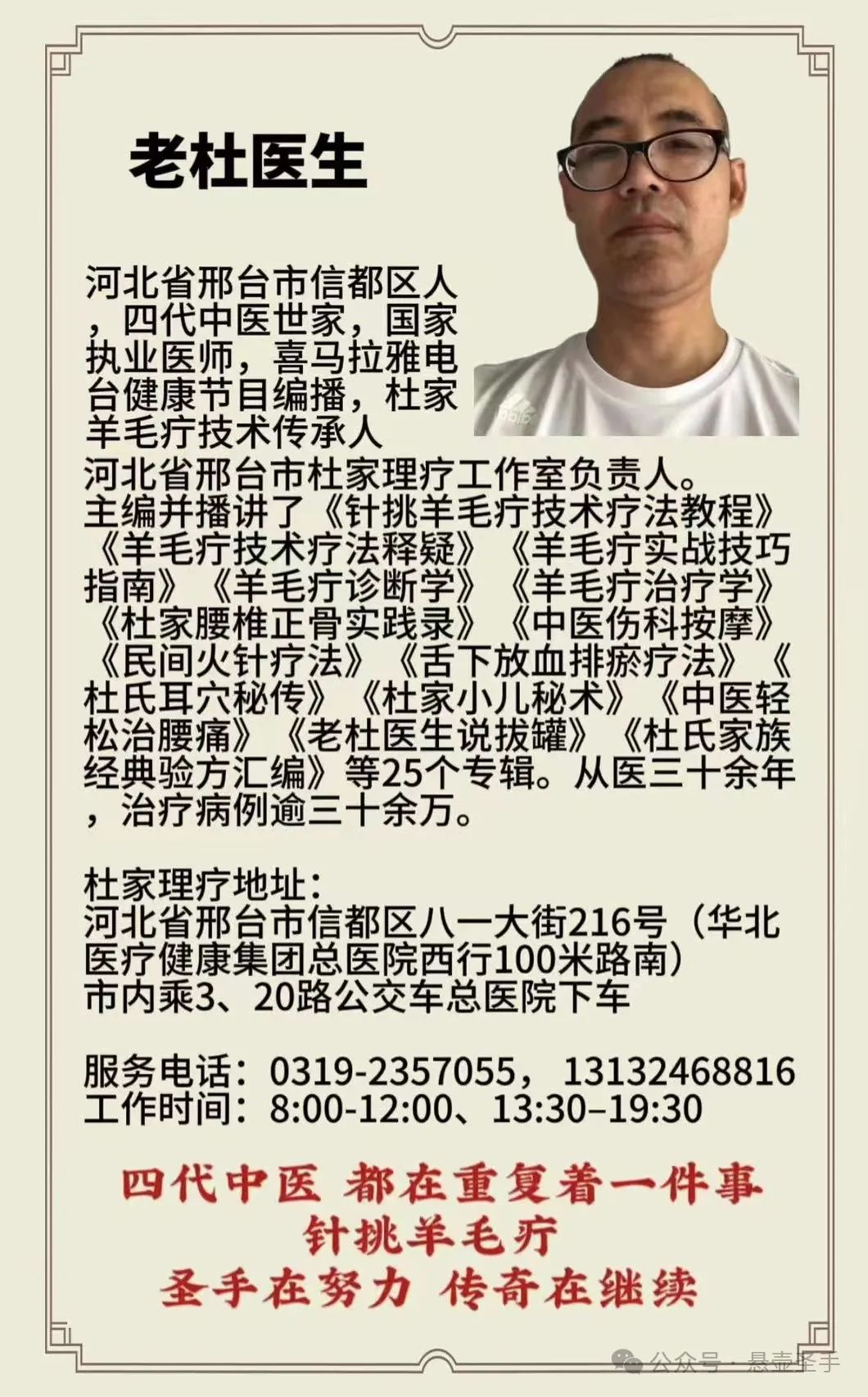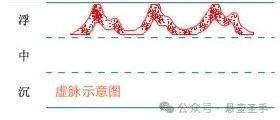The Xu pulse (虚脉) is one of the most representative pulse types in Traditional Chinese Medicine (TCM) pulse diagnosis, playing a crucial role in assessing the deficiency or excess of the body’s vital energy (正气). The following is an in-depth analysis of the Xu pulse from the perspectives of body image and main diseases.

“Xu he si xing, fu da chi ruan; ji hu xun an, ji bu ke jian,” this verse describes the characteristics of the Xu pulse in detail. “Xu he si xing, fu da chi ruan” indicates that the Xu pulse combines the features of four pulse types: fu (浮, superficial), da (大, large), chi (迟, slow), and ruan (软, soft). Fu means it can be felt with light pressure, indicating a relatively shallow pulse position; da refers to a wide pulse body; chi signifies a slow pulse rate, with fewer beats; and ruan indicates a lack of strength, feeling soft upon pressure. “Ji hu xun an, ji bu ke jian” further emphasizes that when pressed harder (寻按), the pulse becomes very weak, almost imperceptible, as if it is gently writhing under the fingers, highlighting the overall feeling of weakness associated with the Xu pulse, which is why it is a general term for all weak pulses.
The Xu pulse primarily indicates a deficiency of the body’s vital energy, mainly associated with xue xu (血虚, blood deficiency), and is also related to conditions such as heat stroke. The appearance of the Xu pulse in different locations reflects the deficiency of different organs.
Left Cun Xu Pulse (左寸虚脉): The left cun corresponds to the heart. A left cun Xu indicates a deficiency of qi and blood in the heart, which governs the spirit. Insufficient heart blood leads to symptoms such as palpitations and anxiety. Patients often feel uneasy, startled by slight movements, and in severe cases, may experience intense heartbeats, all manifestations of heart deficiency causing unrest.
Right Cun Xu Pulse (右寸虚脉): The right cun corresponds to the lungs. A right cun Xu suggests lung deficiency, which governs qi and respiration. Lung deficiency weakens the generation and circulation of qi, leading to symptoms such as spontaneous sweating (自汗, sweating without external factors) and feelings of breathlessness, which worsen with activity.
Left Guan Xu Pulse (左关虚脉): The left guan is related to the liver. A left guan Xu indicates insufficient liver blood, which nourishes the tendons. Inadequate liver blood can lead to symptoms such as numbness in the limbs, difficulty in flexing and extending, and joint pain, especially after exertion.
Right Guan Xu Pulse (右关虚脉): The right guan corresponds to the spleen and stomach. A right guan Xu often indicates coldness in the spleen, leading to weakened digestive functions and symptoms such as indigestion, abdominal fullness, poor appetite, and loose stools.
Left Chi Xu Pulse (左尺虚脉): The left chi corresponds to the kidneys, governing kidney yin. A left chi Xu indicates kidney yin deficiency, which affects the bones and lumbar region, leading to symptoms such as weakness and pain in the lower back and knees, severely impacting mobility.
Right Chi Xu Pulse (右尺虚脉): The right chi also corresponds to the kidneys, governing kidney yang. A right chi Xu suggests kidney yang deficiency, which is fundamental to the body’s yang energy. Insufficient kidney yang leads to cold symptoms such as cold limbs, frequent nighttime urination, and sexual dysfunction.
The Xu pulse is characterized by weakness in all three pulse positions, reflecting typical manifestations of deficiency syndrome, primarily indicating either qi xu (气虚, qi deficiency) or qi and blood xu (气血两虚, deficiency of both qi and blood). Insufficient vital energy leads to a decline in organ function, which is manifested as the Xu pulse. This can arise from congenital deficiencies, improper postnatal care, or prolonged illness.
The Xu pulse, through its unique body image and clear patterns of main diseases, provides important evidence for clinical diagnosis in TCM. When a TCM practitioner detects a Xu pulse during diagnosis, they can preliminarily assess the patient’s condition of weakened vital energy and, in conjunction with other symptoms, further clarify the location and degree of organ deficiency, thereby formulating targeted treatment plans to restore the balance of qi and blood and organ function.




